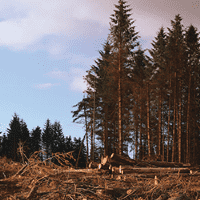The market in 2017 was characterised by a very ‘normal’ level of stock traded, but a sharp rise in the average price paid. There remains a general lack of high quality investment plantations being actively marketed and indeed, much of the recorded sales activity occurred late in the period. The appreciation in average price was considerable at nearly 20% over the year. Based on our longer term dataset, average productive values have increased by around 325% over 20 years, representing a compound annual growth rate of around 8%.
In the introduction we posed two questions; at around 8% why not trees and, how long can this performance continue?
Why not trees? This is not hard to answer as the case for forest ownership seems compelling and at the moment the asset class can appear to do no wrong – the main issue is difficulty in getting into the asset in the first place. The underlying fundamentals are based on the sustainable production of a useful commodity with monetary value against a back drop of a rising global population generating locked-in, long term demand.
In the UK this is coupled with a capital market offering investors a ready exit at any time, generating strong returns in a favourable taxation environment. Put simply, there should be a place for forestry in all well balanced real estate investment portfolios and there remains strong upside potential from rising timber prices.



.png)
.png)
